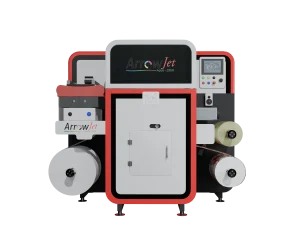Table of Contents
What is Security Printing? Why It Matters and Where It's Used
In a world where trust is paramount, the threat of counterfeiting looms large.
Imagine the panic of discovering that the passport you’ve been carrying is fake, or the frustration of realizing that the check you received is fraudulent.
Such scenarios not only endanger individuals but also undermine the fabric of society. This is where security printing emerges as the knight in shining armor, offering a robust solution to combat counterfeit activities.
Introduction: The Peril of Counterfeiting
Counterfeiting poses a grave threat to our society, jeopardizing the authenticity of essential documents and financial instruments.
Picture this: you’re handed a passport, and as you go through the customs line, a border official detects something amiss. The panic sets in as you realize that the passport you thought was legitimate is, in fact, a counterfeit.
The repercussions could range from identity theft to restricted travel or worse. This is where security printing steps in as the guardian of authenticity, ensuring the integrity of vital documents.
Counterfeiting is not merely a financial crime; it’s a threat to public safety and trust. Consider the implications of counterfeit pharmaceuticals flooding the market or fake identification cards falling into the wrong hands.
The consequences can be devastating, leading to health hazards, legal complications, and even endangering lives.
In a world where the authenticity of documents is crucial for security and well-being, security printing emerges as a vital defense against counterfeit threats.
What is Security Printing?
Security printing involves employing specialized techniques to create documents impervious to forgery and counterfeiting.
It’s the art of embedding intricate security features into various items, from currency notes to product labels.
Imagine security printing as a complex puzzle, where each piece adds a layer of protection against counterfeiters.
Watermarks, holograms, security threads, microprinting, and security numbering are just a few examples of the sophisticated techniques employed in security printing.
The printing process itself is a carefully orchestrated dance of precision and technology.
High-resolution printers, specialized inks, and intricate designs come together to create documents that are not just visually appealing but also virtually impossible to replicate.
With advancements in technology, security printing has evolved to encompass not just physical features but also digital elements, such as encrypted QR codes and RFID tags, further enhancing document security.
The Importance of Security Printing
In today’s interconnected world, the ramifications of counterfeiting extend far beyond mere economic loss.
From identity theft to compromised safety, the consequences are dire. Trust and authenticity are the bedrocks of our society, especially concerning documents like currency, passports, and product labels.
Security printing serves as the vanguard, protecting consumers, preserving financial systems, and safeguarding sensitive information.
Imagine a world without security printing: counterfeiters running rampant, forging documents with impunity, and eroding trust in institutions.
The chaos and uncertainty that would ensue are unthinkable. Security printing not only protects individuals and businesses from financial loss but also upholds the integrity of essential documents that form the backbone of our society.
It’s not just about printing; it’s about preserving trust, security, and peace of mind.
Applications of Security Printing
Security printing finds extensive use across various domains, including:
1) Pharmaceutical packaging
The Pharmaceutical industry relies on security printing to safeguard medications from counterfeiters.
Tamper-evident seals, unique serial numbers, and covert security features are integrated into drug packaging, ensuring the authenticity and safety of medications and protecting patients from harmful counterfeit drugs.
2) Government documents
Government documents such as passports, ID cards, and birth certificates require utmost security to prevent unauthorized replication.
Security printing ensures that these documents are equipped with features like watermarks, holograms, and microtext, making them nearly impossible to forge.
3) Financial instruments
Currency, checks, and stock certificates are prime targets for counterfeiters due to their monetary value.
Security printing incorporates intricate designs, specialized inks, and security threads into these instruments, deterring counterfeit attempts and maintaining trust in financial systems.
4) Secure packaging
Tamper-evident seals and security tapes are essential for ensuring the integrity of packages during transit.
Security printing adds an extra layer of protection by incorporating unique identifiers and overt/covert security features, assuring consumers that their products are genuine and untampered.
5) Product authentication labels
Brands rely on security printing to protect their products from counterfeiters.
Authentication labels featuring holographic elements, unique serial numbers, and covert features help consumers verify the authenticity of their purchases, safeguarding brand reputation and consumer trust.
6) Tickets and coupons
Event tickets, coupons, and vouchers often contain security features to prevent unauthorized duplication and fraud.
Security printing techniques like microtext, UV printing, and security numbering make these items resistant to counterfeiting, ensuring fair access and redemption.
Introducing the ArrowJet Aqua 330R

Meet the ArrowJet Aqua 330R, your ally in the realm of security printing. This state-of-the-art printer is not just a machine; it’s a fortress against counterfeiters.
Imagine the precision of its high-resolution printing capabilities, rendering security features with impeccable detail. Picture the compatibility with specialized inks, such as water-based inks, ensuring not just clarity but also durability in the face of tampering.
Whether it’s roll-to-roll printing or versatile applications, this printer delivers excellence, one label at a time.
Conclusion: Upholding Trust with Security Printing
In a world plagued by counterfeit threats, security printing emerges as a beacon of hope, fortifying documents with trust and authenticity.
The ArrowJet Aqua 330R stands at the forefront, empowering businesses and individuals to combat counterfeiting effectively.
Embrace the power of security printing and embark on a journey towards a more secure future.
FAQs
Q) What are some common security features used in secure printing?
A: Common security features include watermarks, holograms, security threads, microprinting, and security numbering, each adding layers of protection against counterfeiters.
Q) Is the ArrowJet Aqua 330R suitable for all security printing applications?
A: While versatile, the ArrowJet Aqua 330R may have limitations for complex security printing needs. It’s best to consult a security printing expert for tailored solutions to meet specific requirements.
Q) What other factors should I consider when choosing a security printing solution?
A: Apart from the printing equipment, partnering with a reputable security printing provider with advanced techniques and certifications is crucial for comprehensive security solutions. Consider factors such as expertise, industry compliance, and ongoing support.
Q) How can I learn more about security printing and its applications?
A: Dive deeper into the realm of security printing by exploring online resources, industry publications, and case studies. Additionally, reaching out to a security printing specialist can provide valuable insights tailored to your specific needs and challenges.
Q) Can security printing completely eliminate counterfeiting?
A: While it significantly reduces the risk, no system is entirely foolproof. Continuous innovation in security printing techniques remains vital in staying ahead of counterfeiters. However, by implementing robust security measures, we can significantly mitigate the threat of counterfeiting and uphold trust in our documents and institutions.
Contact With Our Team Now

Breaking News: Arrow Systems Partners with BUSINESSWARE to Transform Digital Printing Across Greece & Cyprus

Sid Sistemas de Impresión in Spain Installs ArrowJet Aqua 330R and DPR Taurus to Bolster Label Production

Step Inside Innovation: Arrow Systems New Experience Center Opens in Ontario, Canada.


